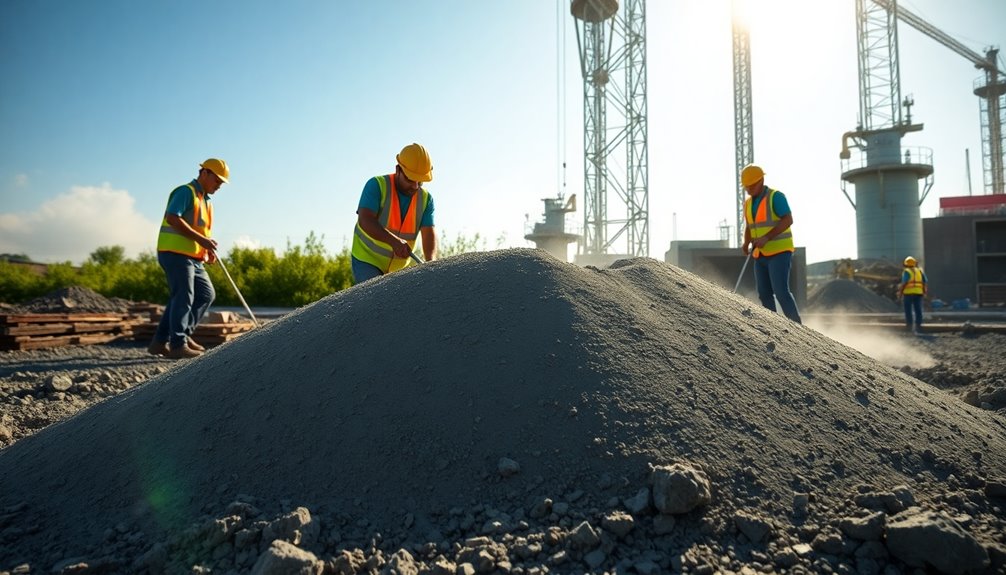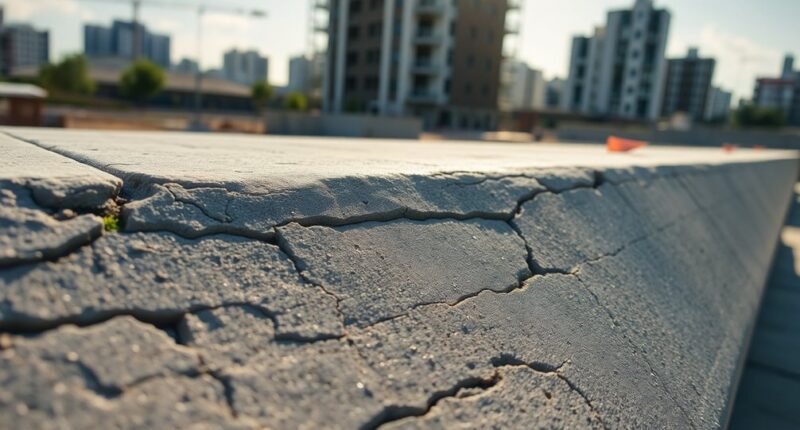Recycled cement cuts emissions by up to 61% compared to traditional methods, making it an eco-friendly choice for construction. It emits significantly less CO2, ensuring you can maintain sustainability without sacrificing quality. This type of cement is strong and durable, suitable for high-quality applications. Plus, it helps promote a circular economy by reducing waste. If you're curious about its benefits and potential challenges, there's more to uncover!
Key Takeaways
- Recycled cement can cut emissions by up to 61% compared to traditional cement production methods.
- It emits between 198 and 320 kg of CO2 per metric ton, significantly lower than conventional options.
- High-quality construction applications can utilize recycled cement without compromising strength or performance.
- Adoption promotes a circular carbon economy, reducing landfill waste and encouraging sustainable practices.
- Collaboration between government and industry can facilitate the integration of recycled cement into building standards.

How can recycled cement transform the construction industry and reduce greenhouse gas emissions? By embracing recycled cement, you can significantly cut emissions—up to 61%—which is far better than traditional methods like clinker replacement. This approach involves taking cement waste and recycling it into a sustainable alternative, drastically lowering the need for virgin materials.
Embracing recycled cement can cut emissions by up to 61%, transforming construction and reducing reliance on virgin materials.
Since the construction industry is a major contributor to greenhouse gas emissions, primarily due to cement production, your choice to adopt recycled cement can make a real difference. The process is straightforward yet effective. You crush concrete into powder and heat it to about 500°C, restoring its binding properties. With this method, recycled cement emits between 198 and 320 kg of CO2 per metric ton—40% less than some low-carbon options. This substantial reduction could have a ripple effect, helping to diminish overall emissions across the construction sector. Moreover, the use of recycled cement can be applied in high-quality applications, promoting a circular carbon economy.
However, there are challenges to overcome before wide-scale adoption becomes a reality. Current building codes often need revisions to integrate recycled materials effectively. Efficient sorting and processing of demolition waste is crucial for scalability, and investment in new technologies may be necessary to optimize production.
Convincing manufacturers to make this shift requires effort, but the rewards are worth it. Policies also play a vital role. Some countries in Europe and Latin America are already setting standards for recycled materials, paving the way for broader acceptance. Collaboration between governments and industries is essential to foster this transition, while public education can elevate awareness about the benefits of recycled materials.
Ultimately, by using recycled cement, you not only reduce landfill waste but also contribute to a more circular economy. The impact is profound: less waste, lower emissions, and a sustainable building approach that doesn't compromise on strength.
Adopting recycled cement is a step toward a greener future in construction.
Frequently Asked Questions
How Is Recycled Cement Produced From Waste Materials?
To produce recycled cement from waste materials, you start by breaking down old concrete into fine powder, sand, and aggregates.
You can use methods like carbonating cement stone or heating to reactivate its binding properties. Steel recycling furnaces may also help in this process.
What Are the Main Applications of Recycled Cement?
You can use recycled cement in various high-quality construction applications, like building foundations and walls.
It's perfect for both new constructions and renovations, allowing you to repurpose materials from demolished buildings.
This sustainable option not only supports environmental goals by reducing landfill waste but also maintains the strength needed for durable projects.
Is Recycled Cement More Expensive Than Traditional Cement?
You might find that recycled cement can be less expensive than traditional cement, depending on various factors.
While production costs can be lower due to repurposed materials, transportation and local sourcing play significant roles in pricing.
Government incentives for sustainable products also help reduce costs.
However, established traditional cement manufacturers may still offer competitive prices due to their optimized processes.
Ultimately, the cost comparison will depend on your specific project needs and local market conditions.
How Does Recycled Cement Impact Construction Timelines?
Recycled cement can significantly impact your construction timelines.
By using recycled materials, you'll speed up sourcing and preparation, allowing for quicker project initiation.
With reduced handling times, you can complete projects faster, minimizing delays often caused by raw material shortages.
This efficiency not only helps you meet deadlines but also lowers the risk of worker exposure to hazards on-site.
Are There Any Health Risks Associated With Using Recycled Cement?
Yes, there are health risks associated with using recycled cement.
You might inhale respirable silica, which can lead to respiratory issues and even lung disease over time. Dust exposure may irritate your skin and eyes, and prolonged inhalation could result in serious conditions like silicosis.
To protect yourself, consider wearing personal protective equipment and ensuring proper ventilation in your work area to minimize these risks. Regular health monitoring is also crucial for your safety.
Conclusion
By embracing recycled cement, you're not just cutting emissions; you're planting seeds for a more sustainable future. Think of it like tending to a garden—each small choice nurtures the planet's health. For instance, studies show that using recycled materials can reduce carbon footprints by up to 30%. Just as a thriving garden attracts butterflies, your commitment to greener construction can inspire others to join the movement, creating a beautiful transformation for generations to come.









